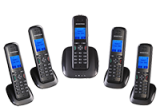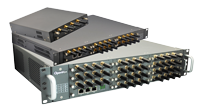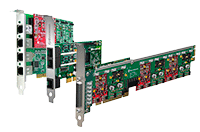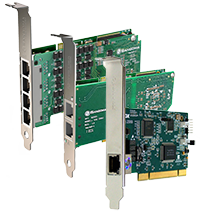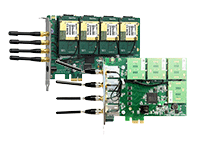What is PCI?
The PCI Local Bus (usually shortened to PCI), or Conventional PCI, is a computer bus for attaching hardware devices in a computer. These devices can take either the form of an integrated circuit fitted onto the motherboard itself, called a planar device in the PCI specification or an expansion card that fits into a socket. The name PCI is an initialism formed from Peripheral Component Interconnect. The PCI bus is common in modern PCs, where it has displaced ISA and VESA Local Bus as the standard expansion bus, and it also appears in many other computer types. Despite the availability of faster interfaces such as PCI-X and PCI Express, conventional PCI remains a very common interface.
The PCI specification covers the physical size of the bus (including wire spacing), electrical characteristics, bus timing, and protocols. The specification can be purchased from the PCI Special Interest Group (PCI-SIG).
Typical PCI cards used in PCs include: network cards, sound cards, modems, extra ports such as USB or serial, TV tuner cards and disk controllers. Historically
video cards were typically PCI devices, but growing bandwidth requirements soon outgrew the capabilities of PCI. PCI video cards remain available for supporting extra monitors and upgrading PCs that do not have any AGP or PCI express slots.
PCI bus:

What is PCI Express?
PCI Express (Peripheral Component Interconnect Express), officially abbreviated as PCIe, is a computer expansion card standard designed to replace the older PCI, PCI-X, and AGP standards. Introduced by Intel in 2004, PCIe (or PCI-E, as it is commonly called) is the latest standard for expansion cards that is available on mainstream personal computers.
PCI Express is used in consumer, server, and industrial applications, both as a motherboard-level interconnect (to link motherboard-mounted peripherals) and as an expansion card interface for add-in boards. A key difference between PCIe and earlier PC buses is a topology based on point-to-point serial links, rather than a shared parallel bus architecture.
The PCIe electrical interface is also used in a variety of other standards, most notably the ExpressCard laptop expansion card interface.




































































